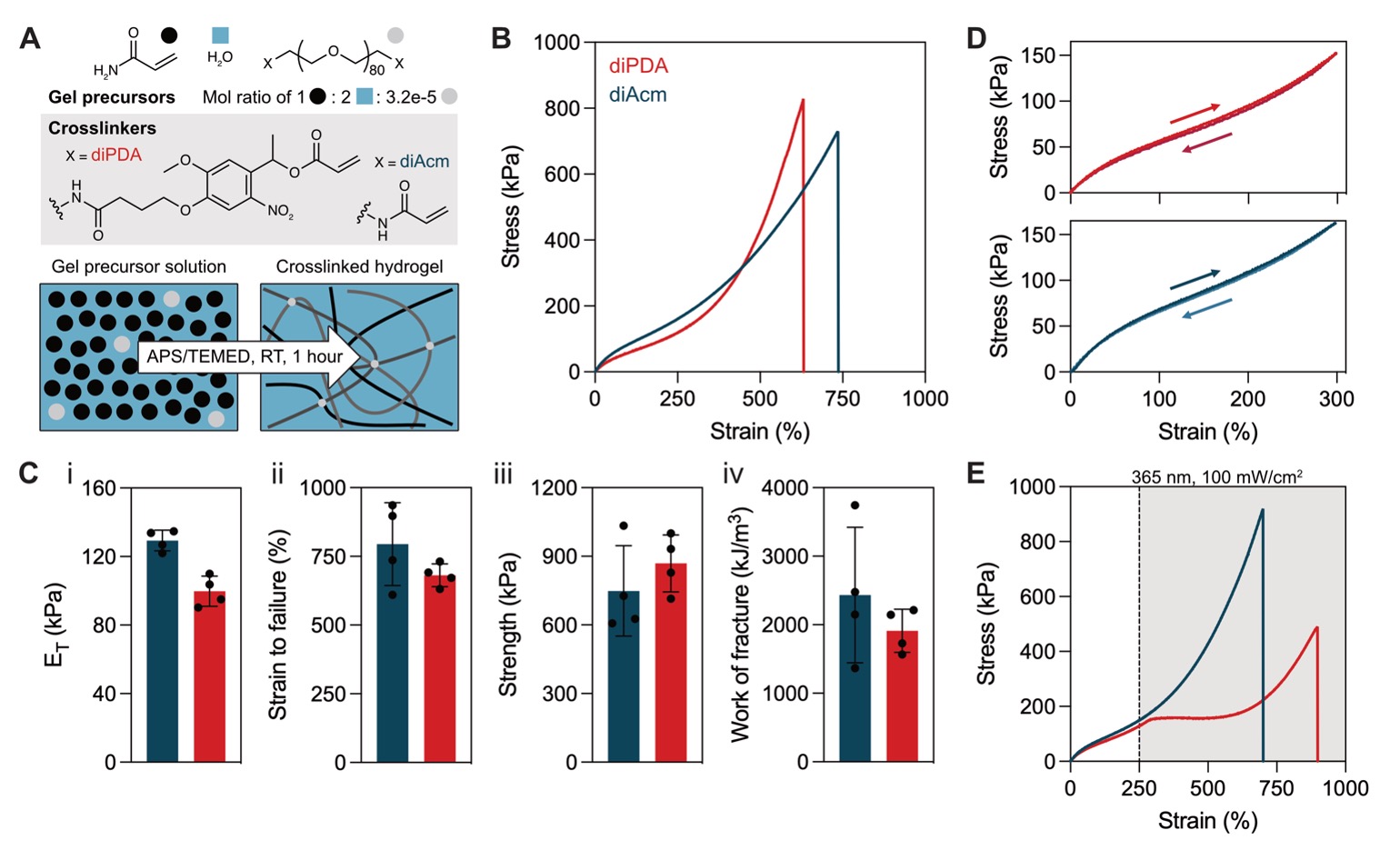ABSTRACT
Hydrogels consist of a hydrophilic network of crosslinked polymer chains with diverse applications, including medical implants, tissue engineering, environmental cleanup, and agriculture. As the field of hydrogel research continually progresses to enhance their properties, innovative strategies are being explored to improve their mechanical performance and functionality. However, conventional covalent hydrogel networks face a notable stiffness-toughness conflict: while increased crosslink density enhances the material's modulus, it simultaneously leads to embrittlement and reduced extensibility, which limits their practical use in many applications. To address these challenges, recent advancements have introduced strategies to form highly entangled poly(acrylamide) hydrogels, colloquially referred to as tanglemers, by optimizing polymerization conditions to maximize the density and length of polymer chains and minimize the concentration of crosslinker. Although entanglements are well-studied in polymer melts, assessing them in crosslinked networks is more challenging, often limited to approximating their theoretical contributions to mechanical properties. In this work, we synthesize and characterize poly(acrylamide) tanglemers using a photolabile oNB crosslinker, allowing for direct assessment of covalent trapping of entanglements under tension. These hydrogels have a relatively high modulus, which can be tuned in situ by crosslink photocleavage (from ET = 100 kPa to <25 kPa). Additionally, we demonstrate that even non-degradable tanglemer formulations can be photo-softened and completely degraded through Fe3+-mediated oxidation of the poly(acrylamide) backbone. While both methods of photodegradation can be used for spatial patterning and can result in softer gels with reduced fracture strength, only crosslink cleavage improves gel extensibility via light-induced chain lengthening (εF = 700% to >1500% following photodegradation). Moreover, crosslink photocleavage affords substantial control over localized swelling and diffusivity, opening new avenues for precise material design. In sum, we introduce a new approach for probing entanglements and asserting spatiotemporal control over stress-strain responses and small molecule diffusivity in poly(acrylamide) tanglemers, suggesting a multitude of potential soft matter applications including controlled release and tunable bioadhesive interfaces.
Fig. 1 | Highly entangled polyacrylamide hydrogels have crosslinker-independent mechanical properties before light exposure. (A) Schematic representation of the formation of entangled polyacrylamide networks using PEG-diPDA (photodegradable diacrylate, red) and PEG-diAcm (non-degradable diacrylamide, blue) crosslinkers. (B) Representative tensile stress–strain curves of tanglemers prepared with each crosslinker, strained at 10 percent/second. (C) Mechanical properties of diPDA- and diAcm-crosslinked tanglemers including (i) Young’s modulus, (ii) strain to failure, (iii) strength and (iv) work of fracture. (D) Hydrogels exhibit negligible hysteresis regardless of crosslinker identity. (E) Tensile stress-strain curves under active irradiation (shaded region) beginning at 250% strain show photoresponsiveness in diPDA-crosslinked hydrogels only. n = 3-4 gels per condition, with representative data shown in panels B, D, and E.


